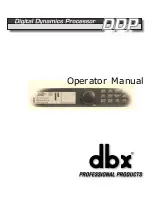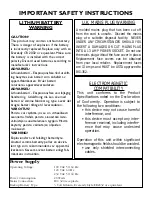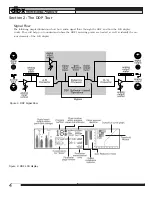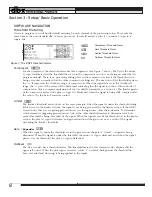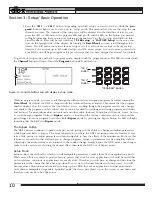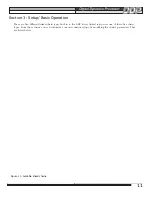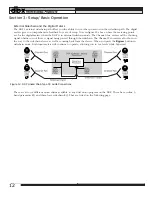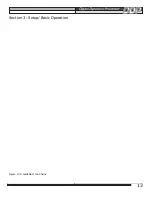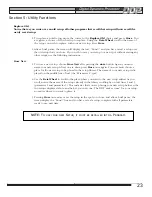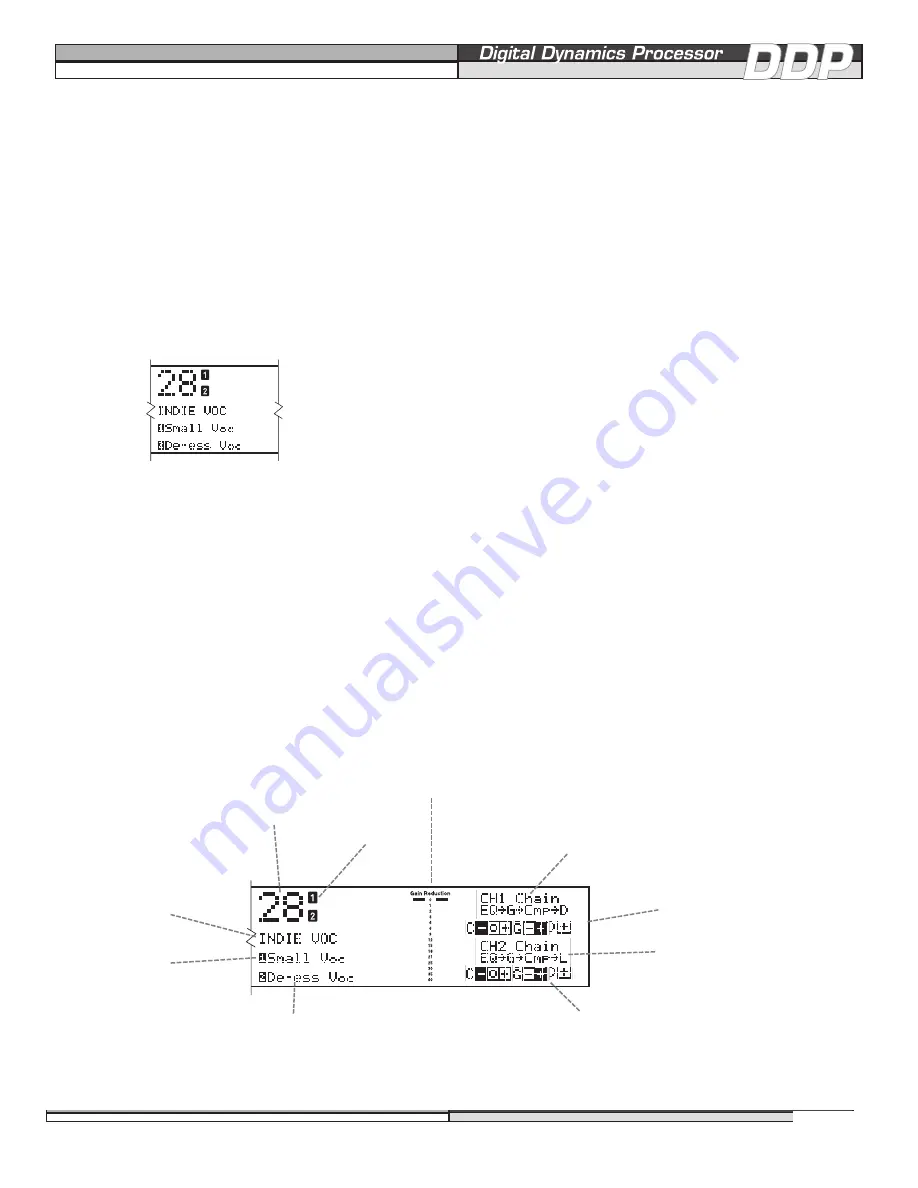
,,,,,
yyyyy
,,,,,
yyyyy
9
Operating Modes
Program
The DDP comes ready to turn on in “Program Mode”. There are a series of 50 factory programs, as well as
enough room to name and store up to 50 of your own programs. The factory designed programs have been given
obvious names, according to application and should be a good jumping off point for all of your processing needs.
They cannot be erased. Their names and characteristics are listed in section 5. At the factory, the factory-designed
programs were also copied into the re-writable user program area. A user program can be erased at any time by
saving a new program in its place.
After you have set up and turned on the DDP, it will be in “program” mode and will show something like the fol-
lowing in the middle section of the LCD display screen:
The large number on the display indicates the program number. It is the method used to bookmark programs,
and all programs have a program number. Each program can store either a linked setup, or two dual mono
setups.
There are two ways to take a look at the setup for any program:
1. While in “program” mode, the display will show the chain for each setup in the curve window, located
on the far right side of the display. The abbreviation for each chain element is as follows:
Equalizer: EQ
Gate: G
Compressor: C or Cmp
Limiter: L
De-Esser: DS
Sidechain EQ: SEQ
Section 3: Setup/Basic Operation
Figure 9: Display showing elements of each setup in a dual mono program.
Figure 8: Sample display showing Program #28, Setup 1 is “small Voc” and Setup 2 is “De-Ess Voc”.
Program
Number
Channel
Identifier
Gain
Reduction
Meter
Program
Name
Channel 1
Setup Name
Channel 2
Setup Name
Channel 1
Chain Type
Channel 1
Threshold Meters
Channel 2
Chain Type
Channel 1
Threshold Meters
Summary of Contents for DDP
Page 1: ...y Operator Manual...
Page 16: ...yyyyy yyyyy 13 Section 3 Setup Basic Operation Figure 13b Available Mono Chains...
Page 42: ...FRAN AIS yyyyy yyyyy 39...
Page 82: ...yyyyy yyyyy 79 DEUTSCH...
Page 122: ...yyyyy yyyyy 119 ESPA OL...

